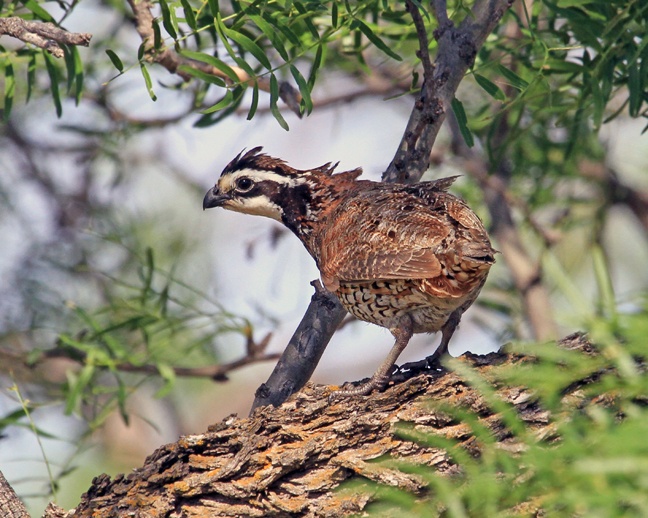We have much more to do and your continued support is needed now more than ever.
Restoring Longleaf Pine in the Hoke Community Forest
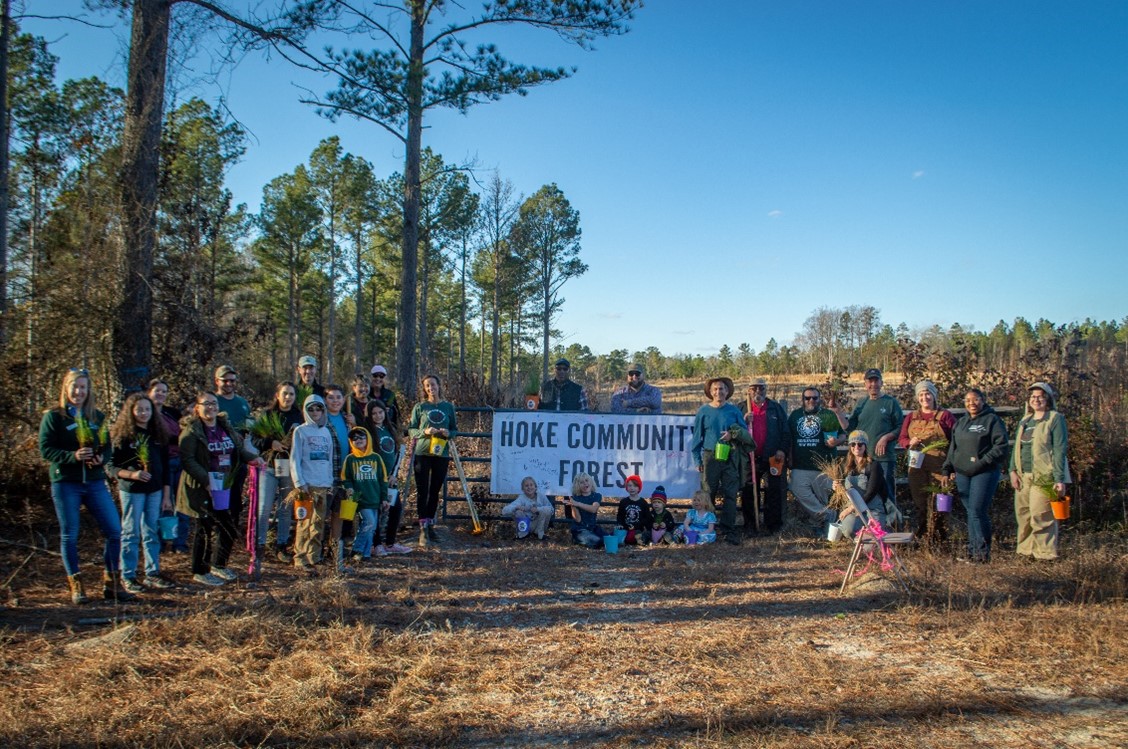
In the North Carolina Sandhills stands Hoke Community Forest, over 500 acres of protected forest land belongs to the citizens of Hoke County. This forest has historically sat idle and underutilized, but now efforts are underway to rehabilitate the property to a thriving ecosystem, and to provide recreational and educational opportunities for local citizens. To support these restoration efforts, National Wildlife Federation (NWF) partnered with Longleaf for All, the Sandhills Prescribed Burn Association (SPBA), Milliken Advisors, USDA Natural Resources Conservation Service (NRCS), Hoke County staff, and the U.S. Forest Service to host its second annual longleaf pine tree planting this past December.
A community that cares
The event drew in over 30 participants, including children from local after-school programs such as the Scouts and 4-H. Volunteers were supplied with rakes, dibble tree bar planting tools, longleaf pine saplings, and wiregrass seed to bring life back to the clearcut portion of Hoke Community Forest. After a warm welcome by the SPBA leader, Jesse Wimberley, the participants set off to find prime ground for their seedlings to thrive.
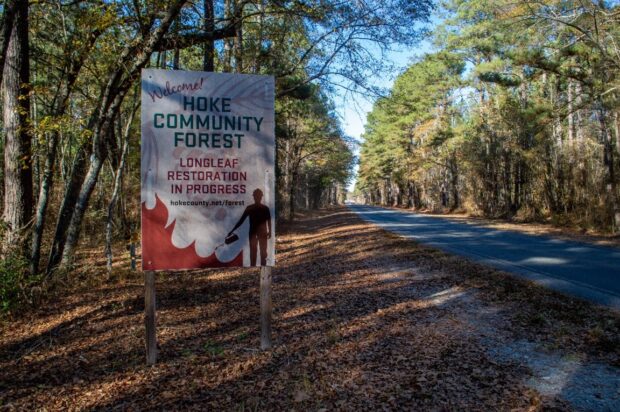
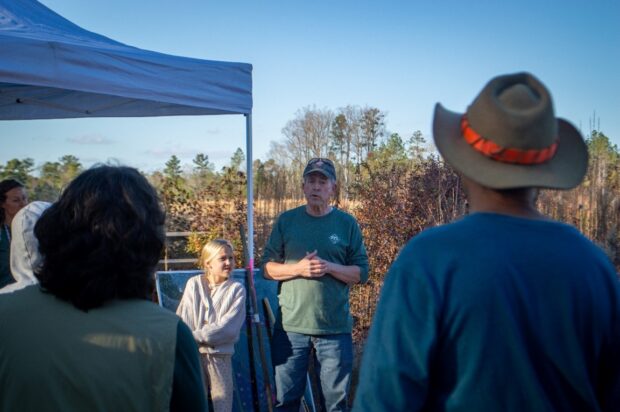
Protecting existing stands of longleaf forest and planting new saplings is more important than ever as habitats rapidly decline due to urbanization and resource extraction. Per North Carolina State University, more than 100 species in North Carolina are considered threatened or endangered. The longleaf pine ecosystem protects more than 30 of those, including the bobwhite quail, red-cockaded woodpecker, and wild turkey.
To maintain the health of the ecosystem, prescribed burning is essential, which leads to the dispersion of wiregrass seeds. Wiregrass helps carry small fires across the landscape in the event of a burning, contributing to the weeding out of non-native and other competitive species.
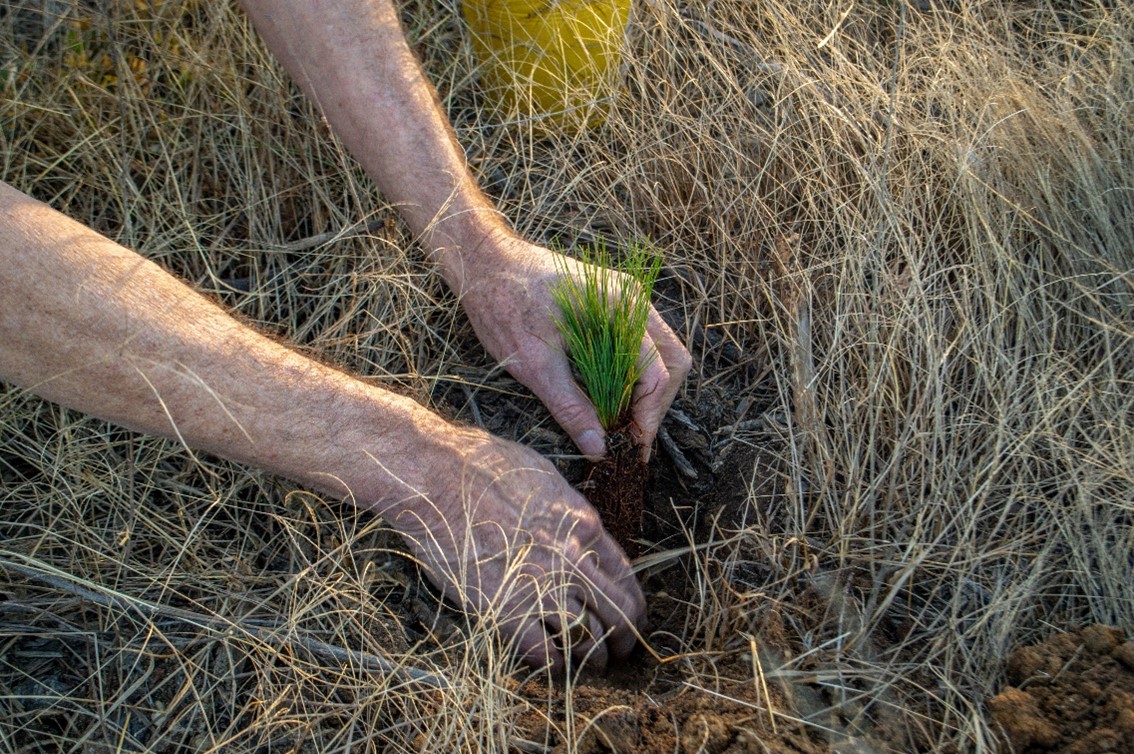
Participants learned about this and more from Rob Milliken, the consulting forester for the project with Milliken Advisors, alongside how important Hoke Community Forest is not only for native wildlife but for the community and the region as a whole from NWF’s Southeast Forestry Director, Tiffany Woods.
“As the name implies, this is Hoke Community Forest. This is owned by the citizens of Hoke County and they’re out here today helping to put the forest back,” said Wimberley. “The longleaf pine forest is one of the most diverse ecosystems on the planet … so bringing out young people who will get to see this forest mature is what really makes me excited, and I think the real value of this effort.”
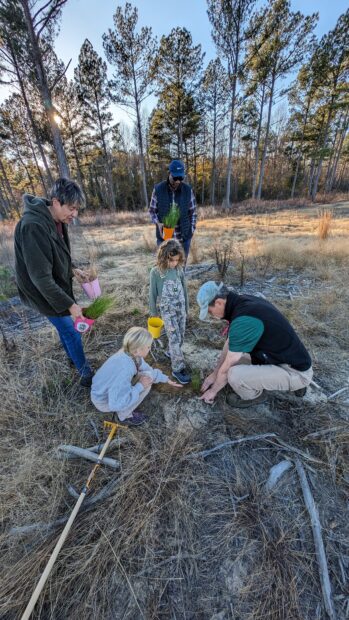

Opportunities for growth
Hoke Community Forest provides recreational and educational opportunities for Hoke County, improving community health through outdoor recreation while creating an inviting space for underserved communities in the process. The forest is also expected to contribute to local economic development which includes creating immediate and long-term income through new jobs, skill training, and timber sales.
By sundown, participants planted more than 200 trees and were given tens more to plant on their own properties. The success of the seed planting is a reminder of the community’s dedication to conserving the natural landscapes that belong to them and their part in restoring this forest. This includes the young participants, who will be able to watch the trees grow with them.
“When we first moved here, it was very different for me because we lived in Montana,” said Sean Taipa, a young Hoke County resident. “To see that people actually care about the forest out here? I thought that was completely amazing.”
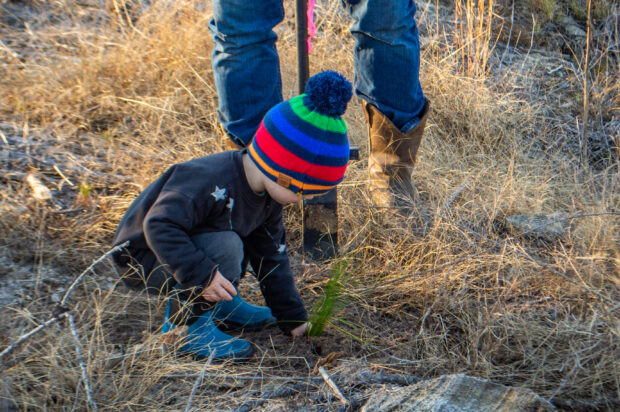

National Wildlife Federation will continue its fundraising and project organization efforts to make this forest a welcoming space for the community and wildlife alike, ensuring further generations can experience the natural wonders of the longleaf pine ecosystem for themselves. Current funders of the project include: the National Fish and Wildlife Foundation, NRCS North Carolina, the U.S. Fish and Wildlife Service, Department of Defense, and the U.S. Forest Service.
USDA is an equal opportunity provider, employer, and lender.
The views and conclusions contained in this document are those of the authors and should not be interpreted as representing the opinions or policies of the U.S. Government or the National Fish and Wildlife Foundation and its funding sources. Mention of trade names or commercial products does not constitute their endorsement by the U.S. Government, or the National Fish and Wildlife Foundation or its funding sources.

